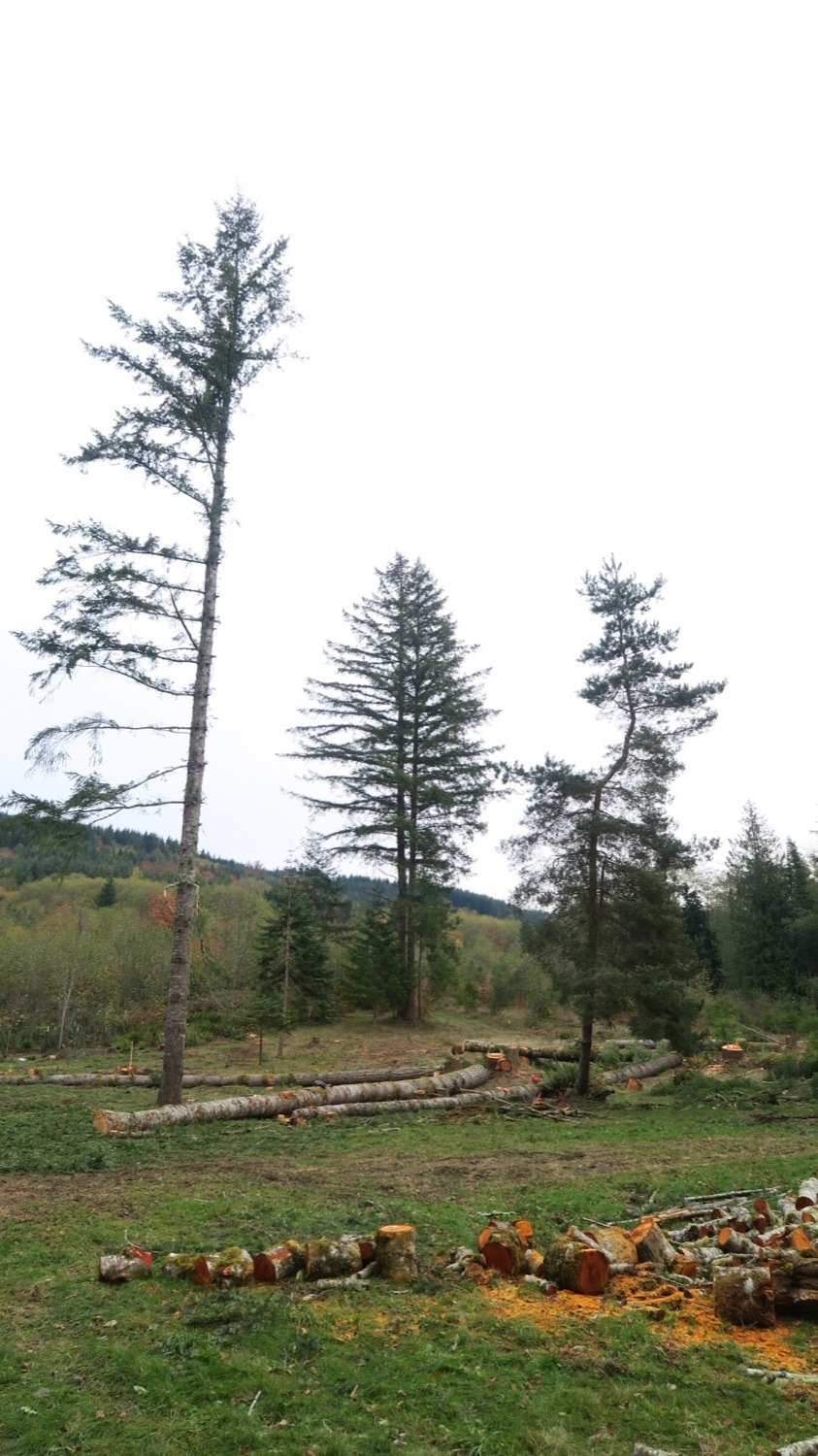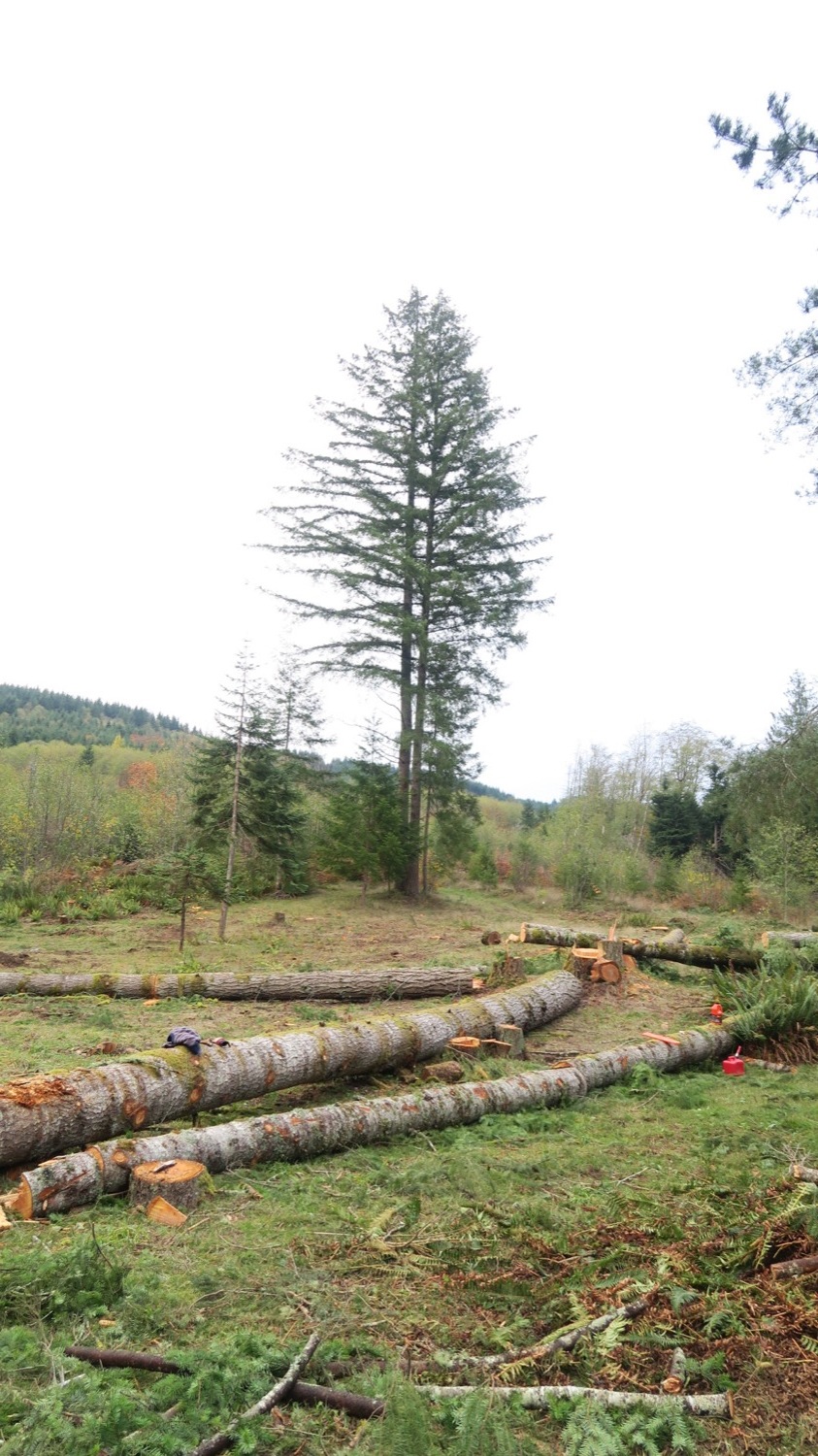Timber and Tractor
Up front, let me say that even though I star in a few of these photos, Joel did 95% of the disassembly of a finger of 100 plantation doug fir trees that looked a lot like fuel for my future kiln and construction timbers. They were also in the way of the future orchard- physically located in some of the ideal area, or blocking light from another ideal area. In October of 2018, Joel bought the tractor, at which time our method changed dramatically, as well as our pace. Prior (images in the previous intro post), he dropped mostly the small ones and cut them at 60” for firewood, eventually moving them with my old pickup into a slowly growing stack to be covered with plywood against winter’s rain. Upon introduction of the tractor, felling was still strategic, but we would immediately take the limbs off and roll parallel to the trunk with the forks on, dropping limbs onto the outstretched arms of the forks and from there, directly onto a fire that already had some heat to it. I discovered one evening that freshly-cut branches actually burn in this circumstance, and we guess that it is because of the high sap level of these confers. It was a wonderful way to clean up the “job site” as Joel would call it, and fire hazards of the future. Pyromanic that I am, I was more than game for massive bonfires on the severe regular.
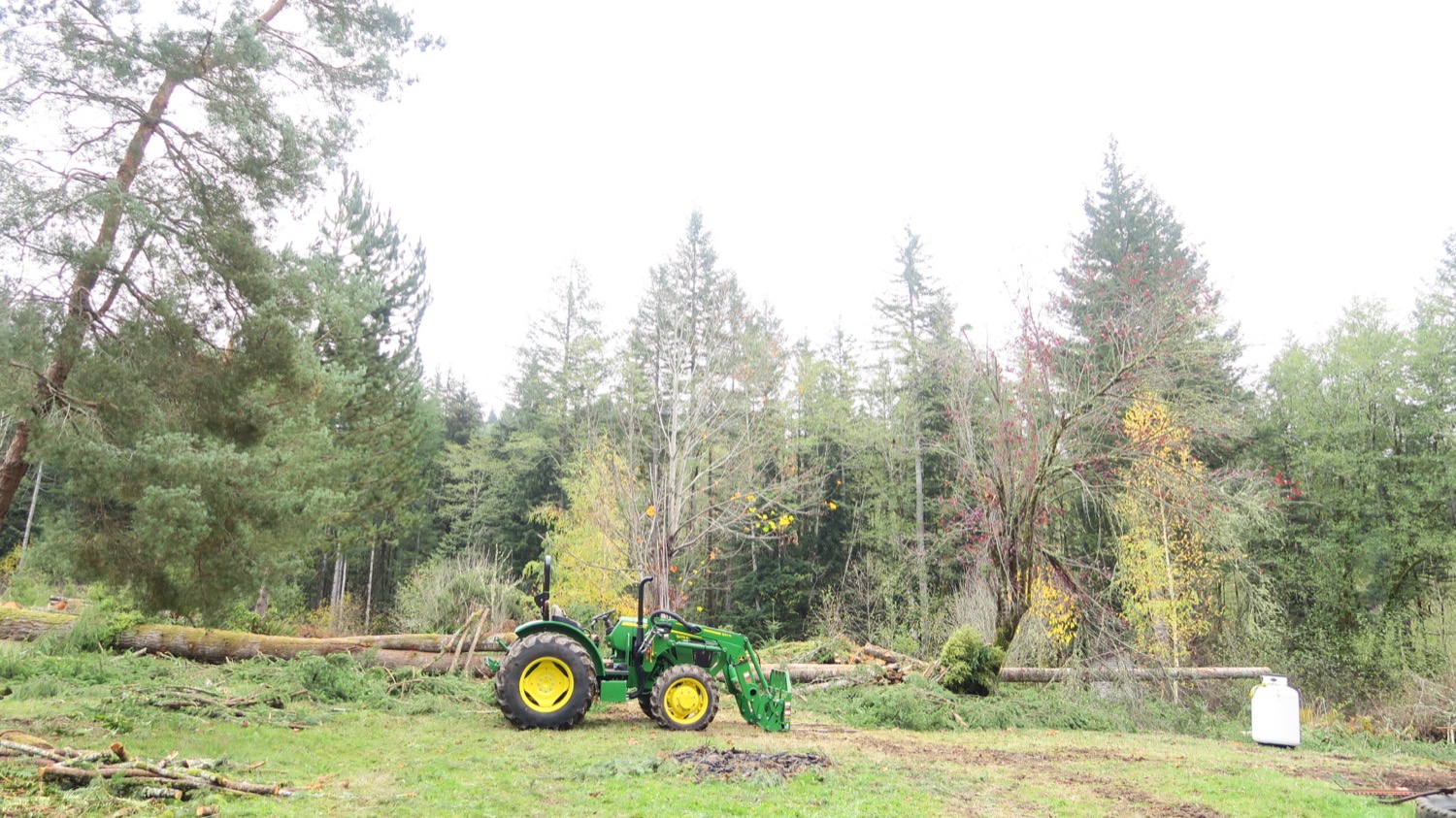
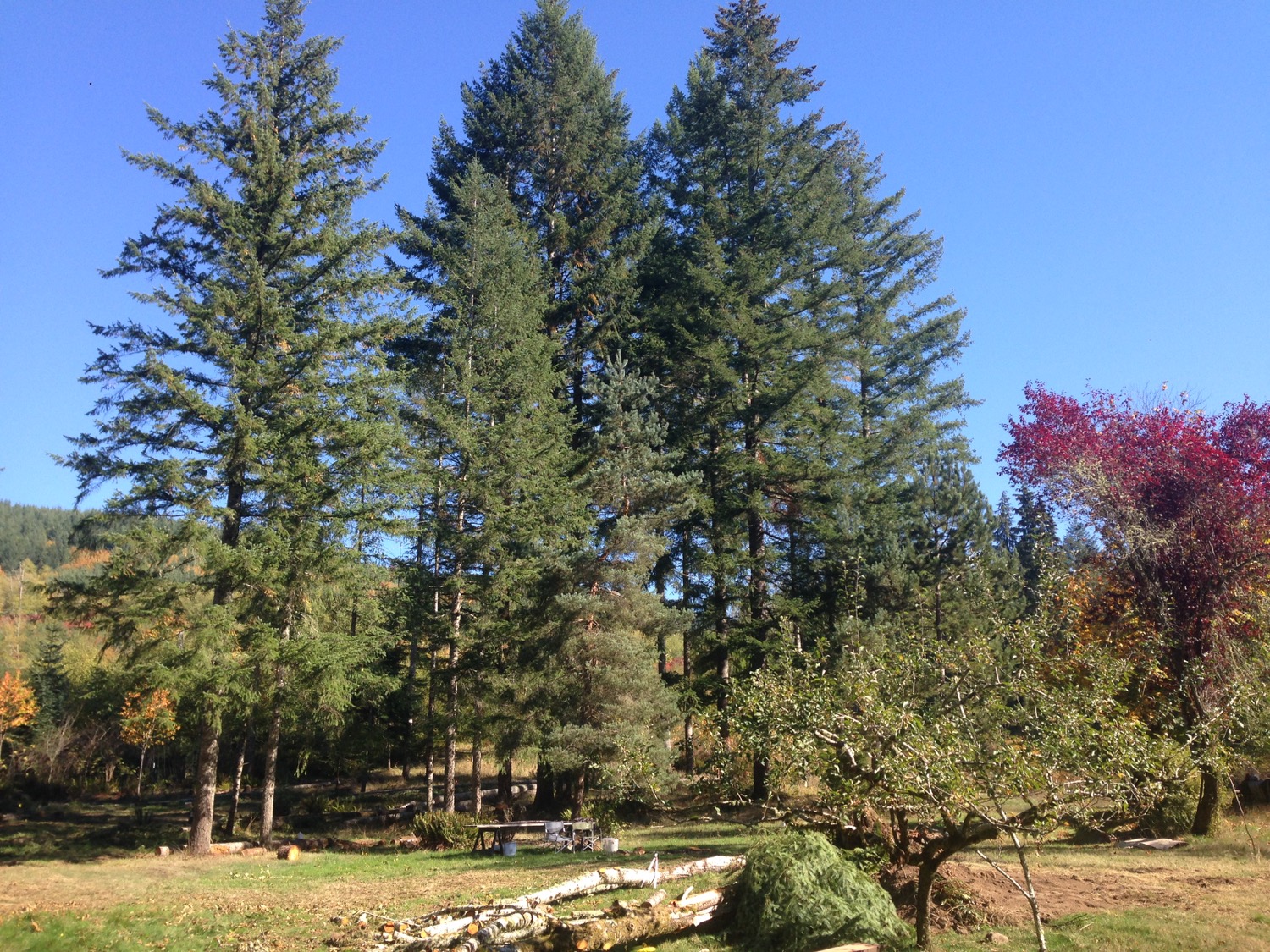
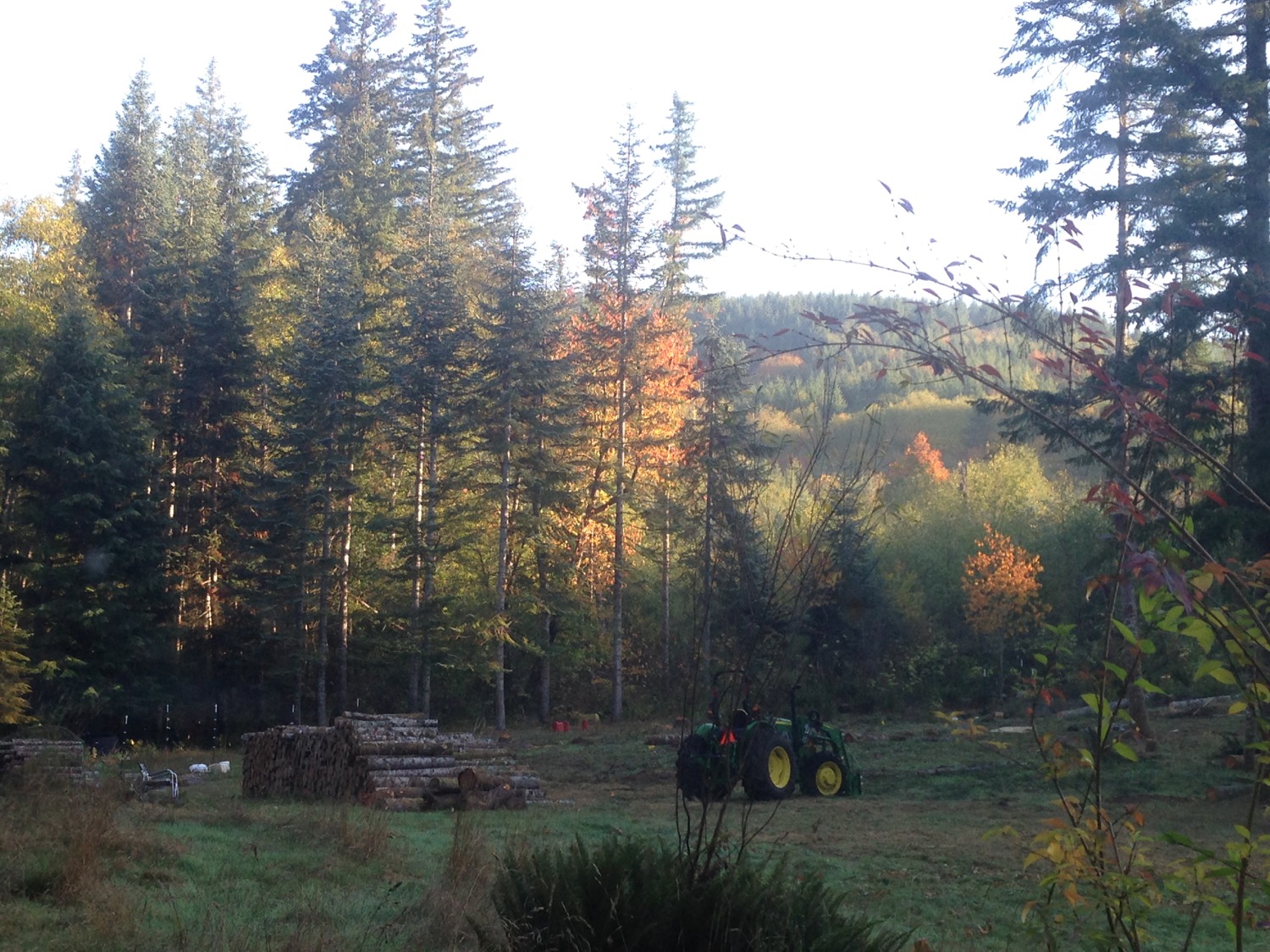
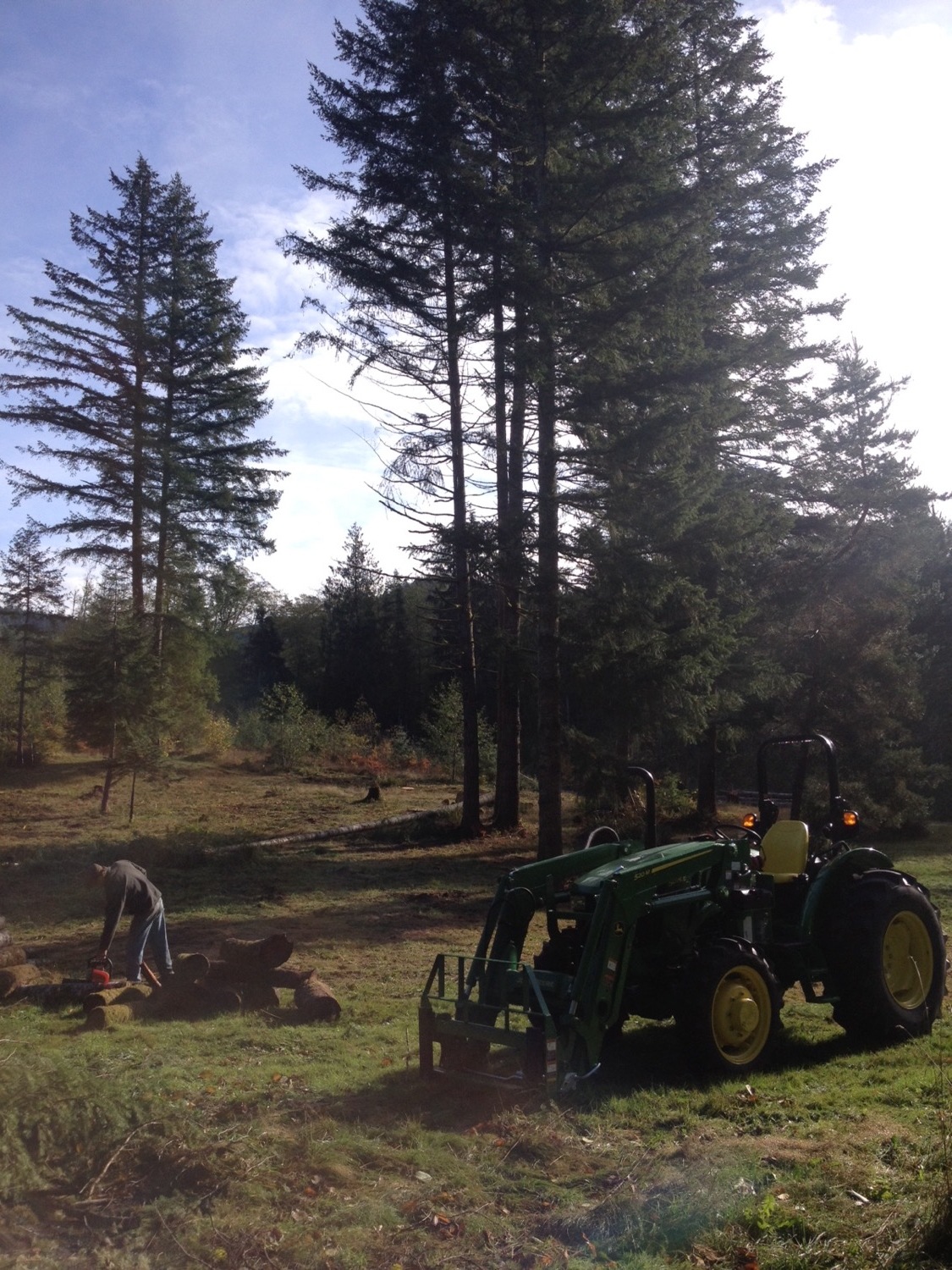
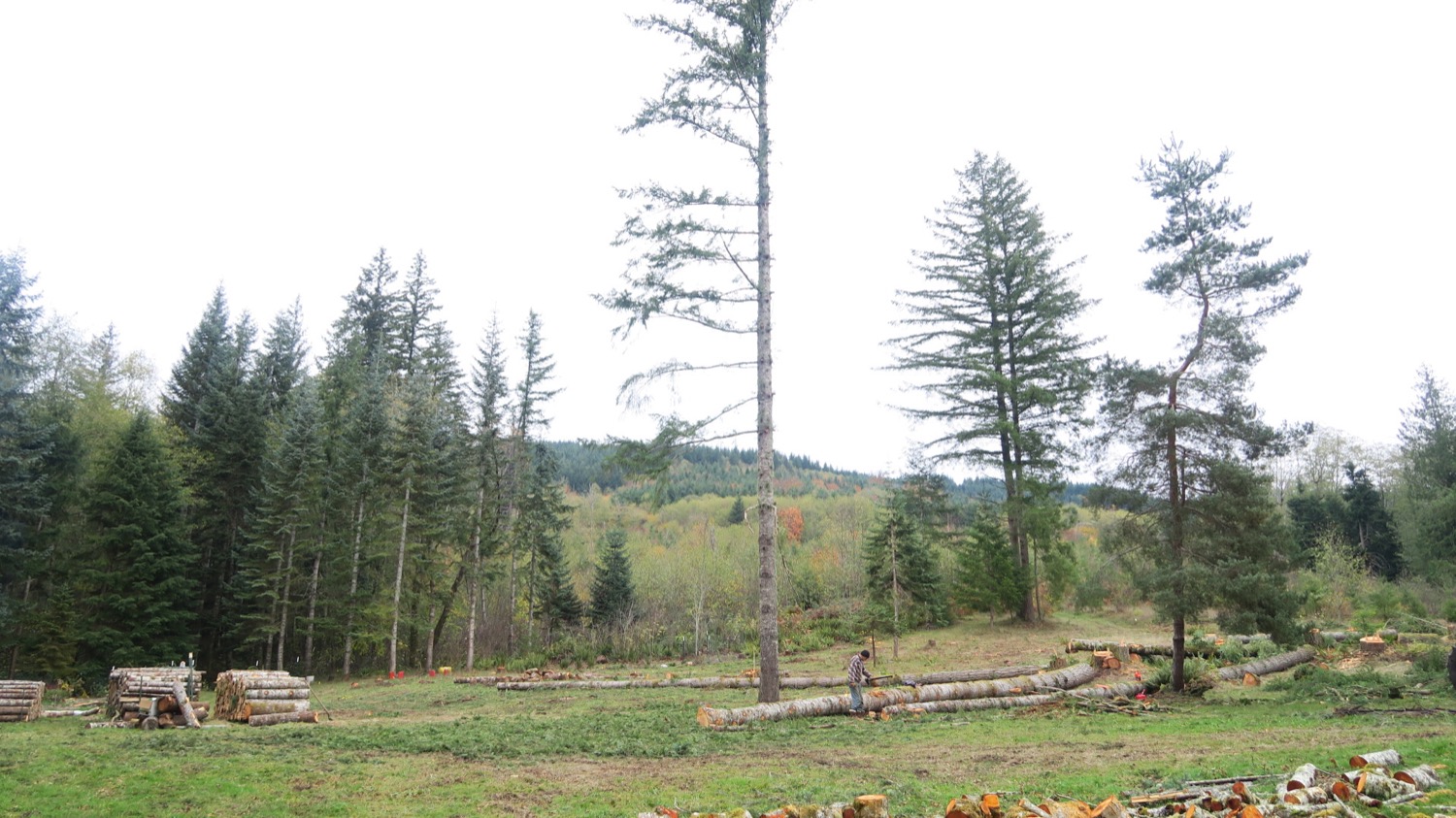
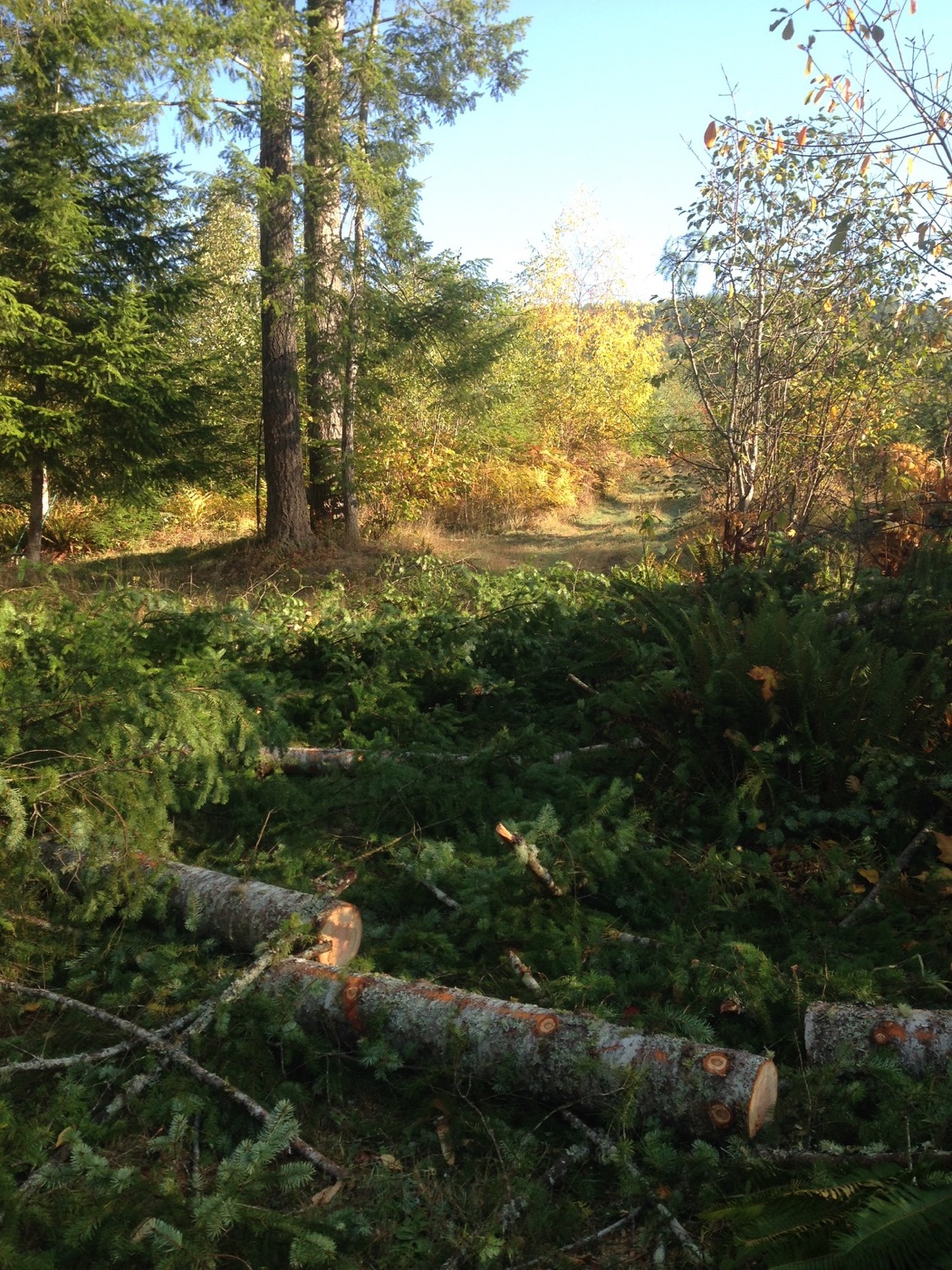
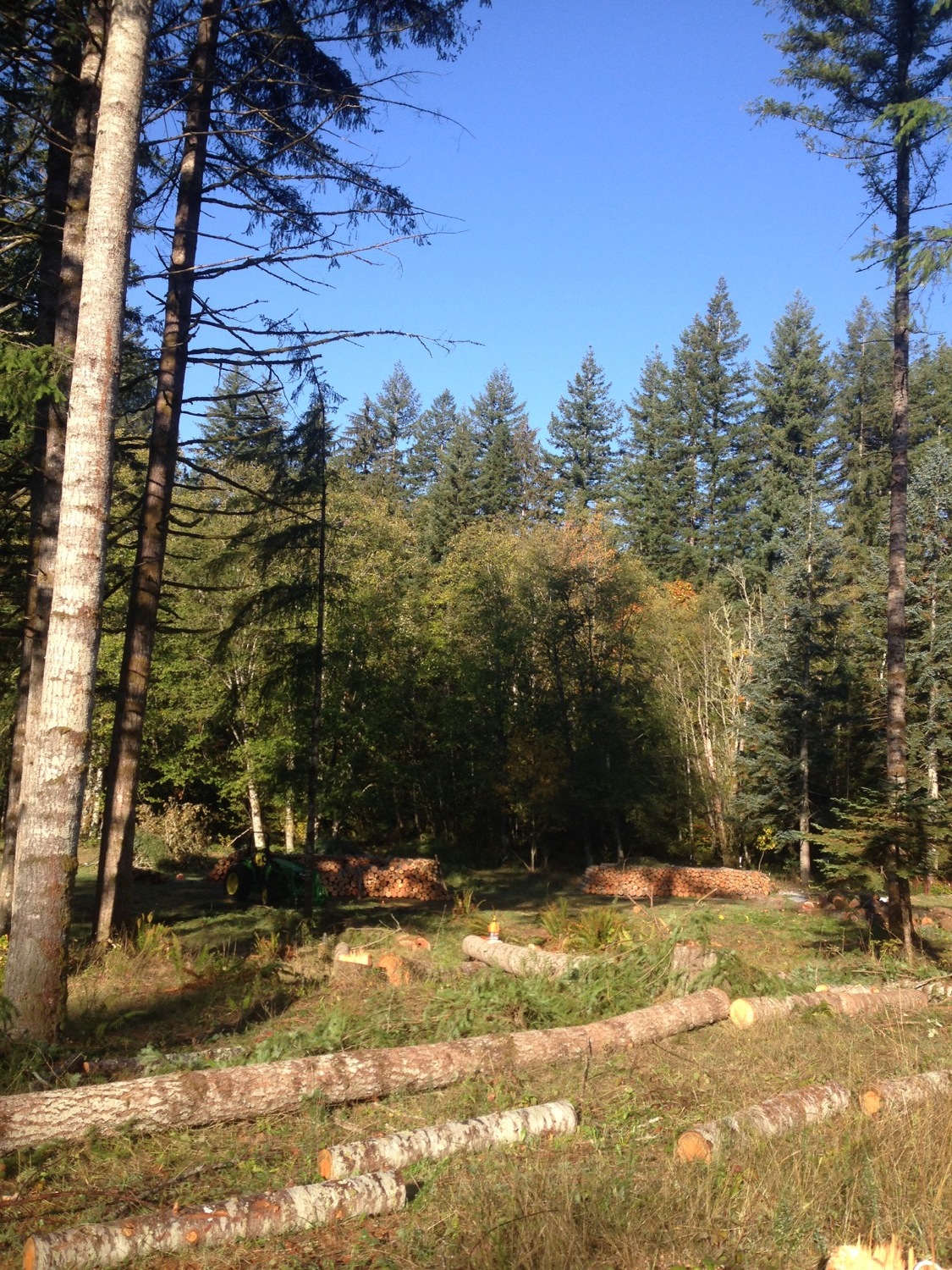
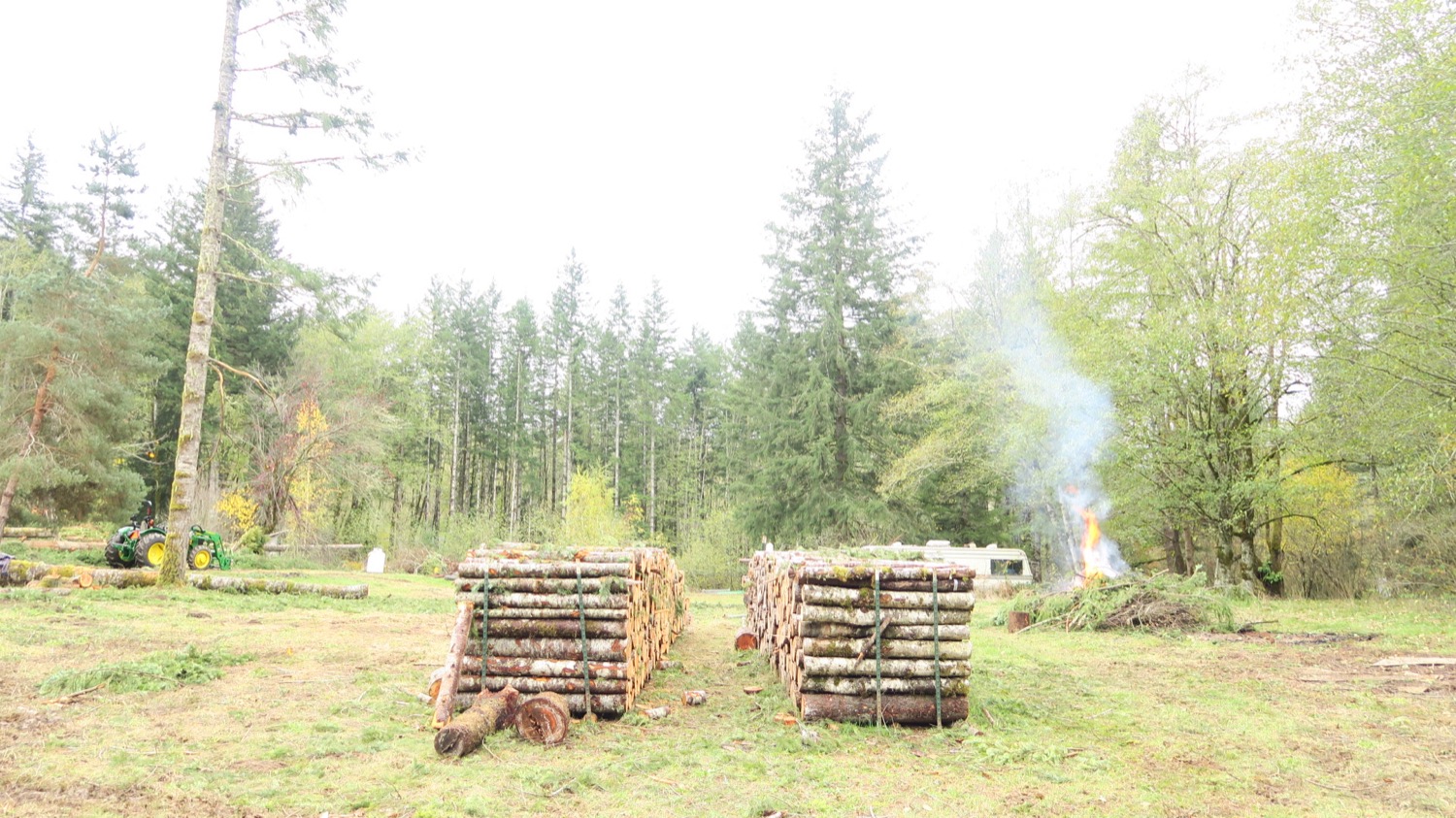
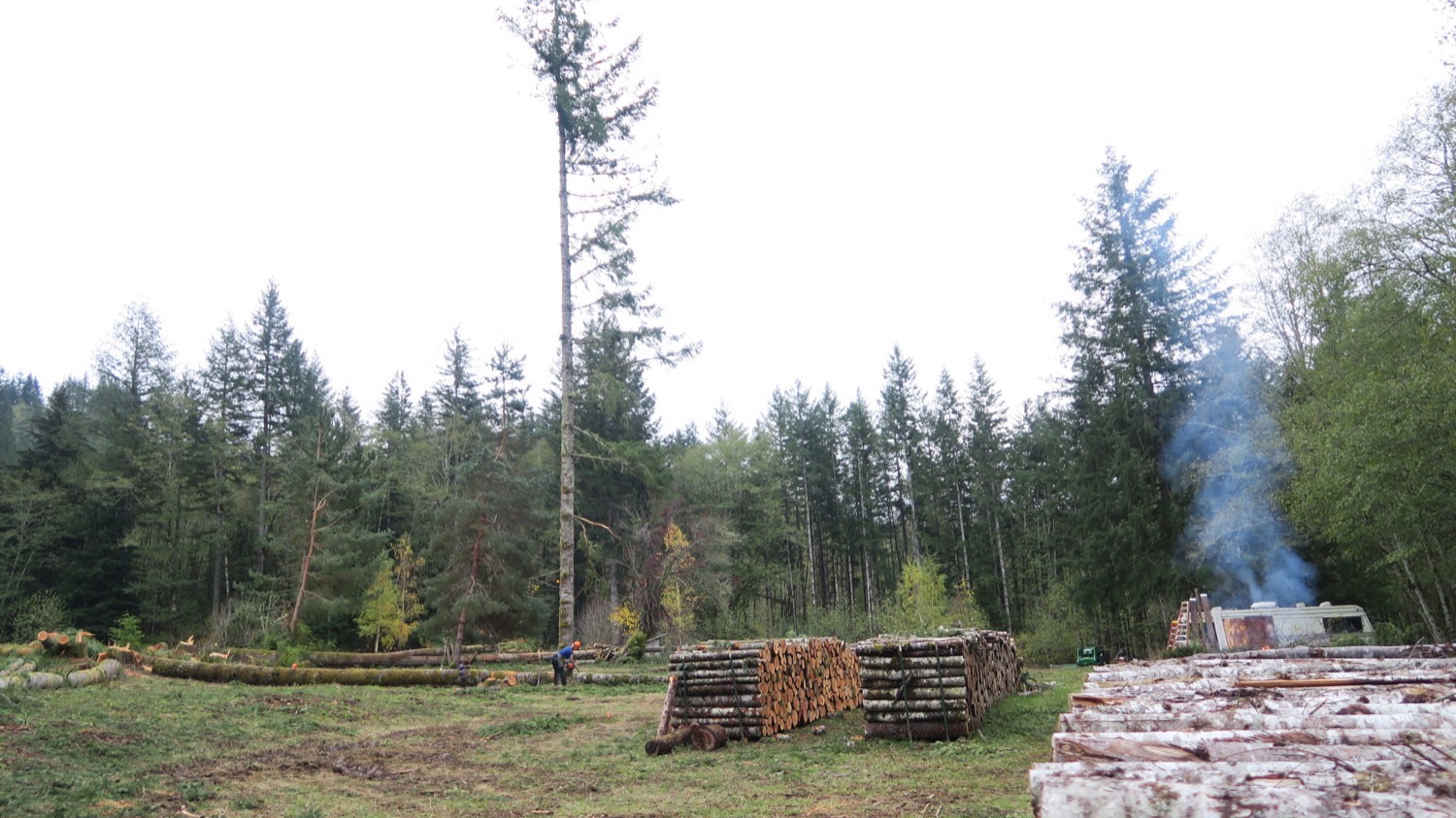
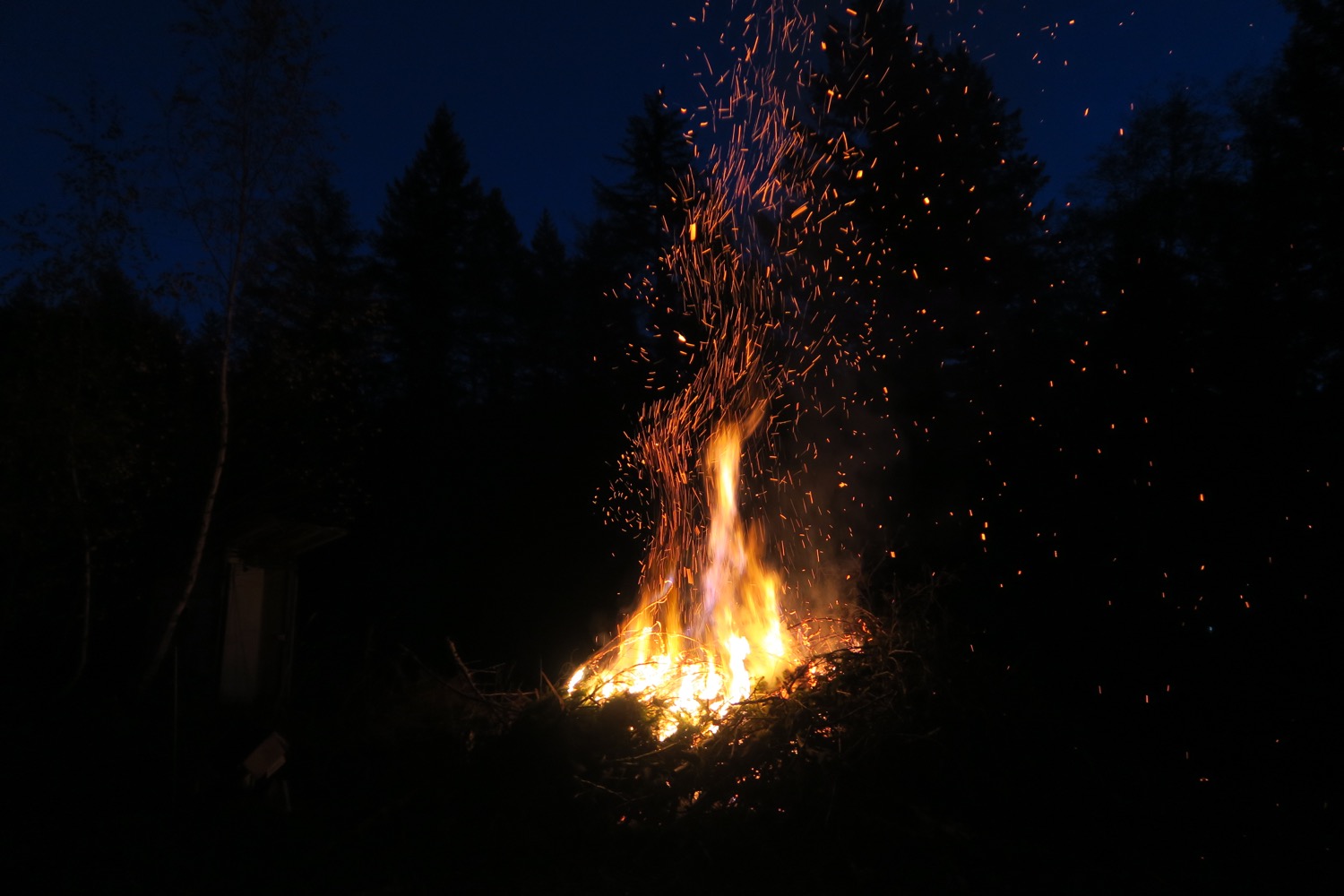
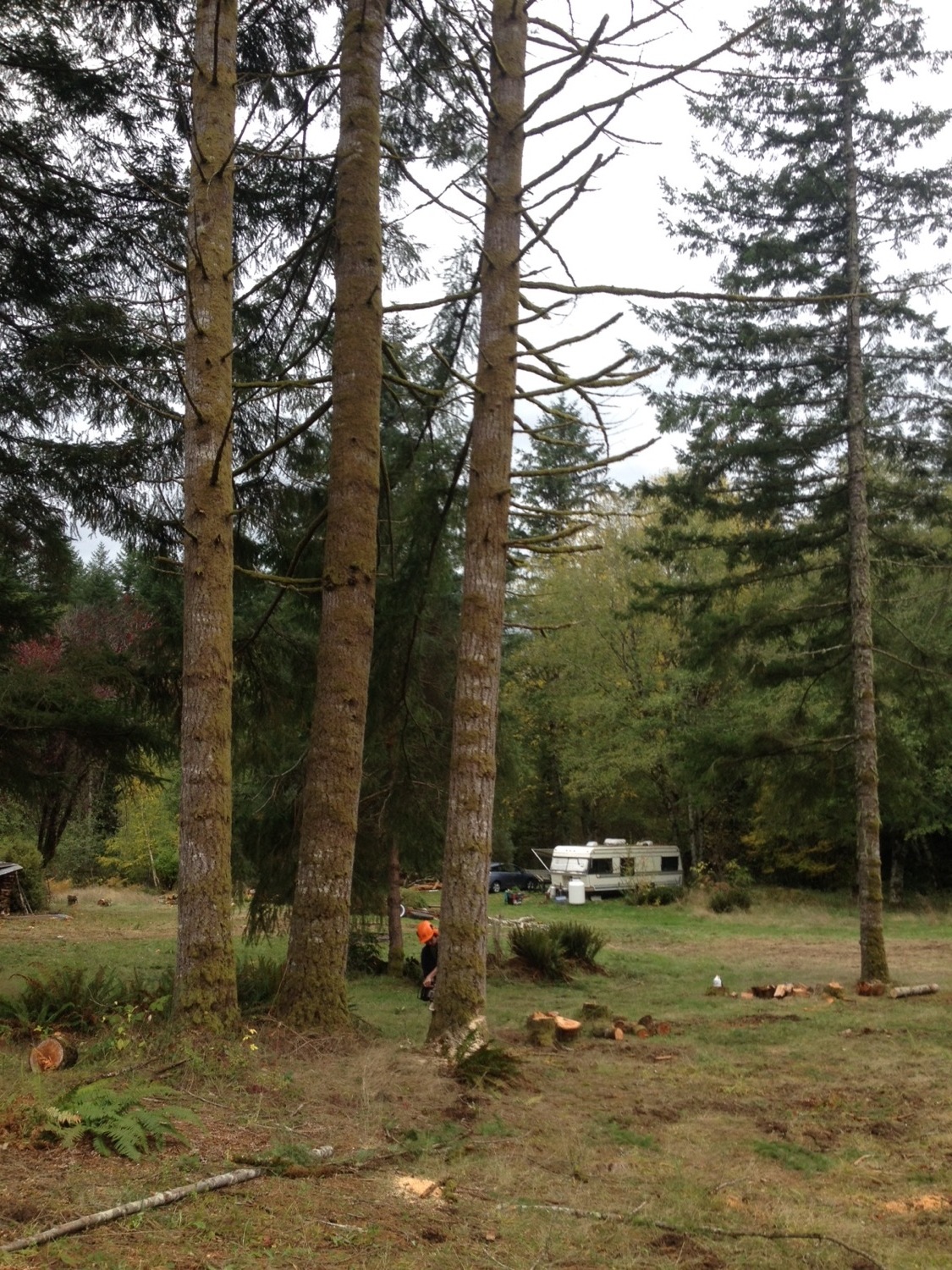
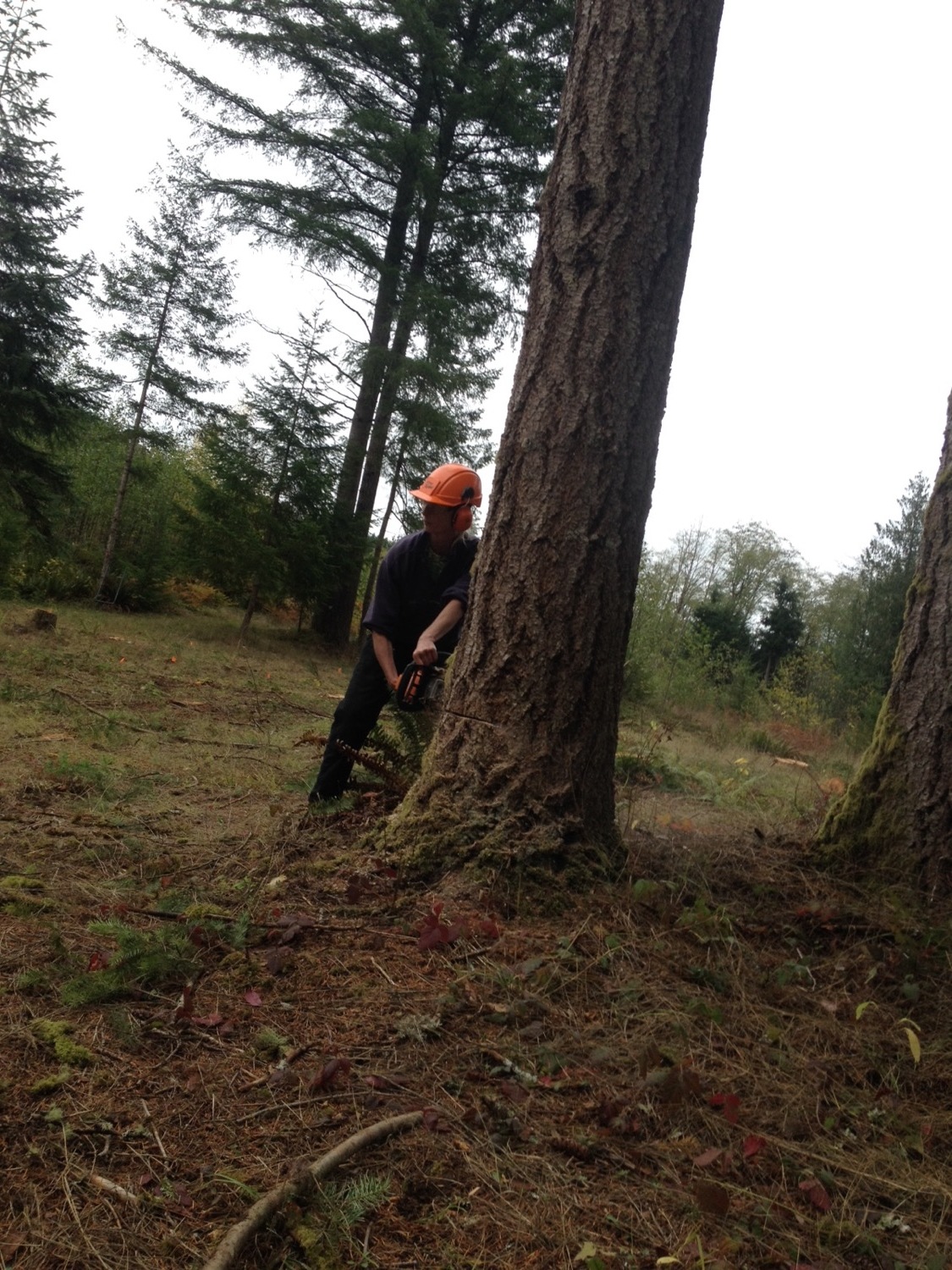
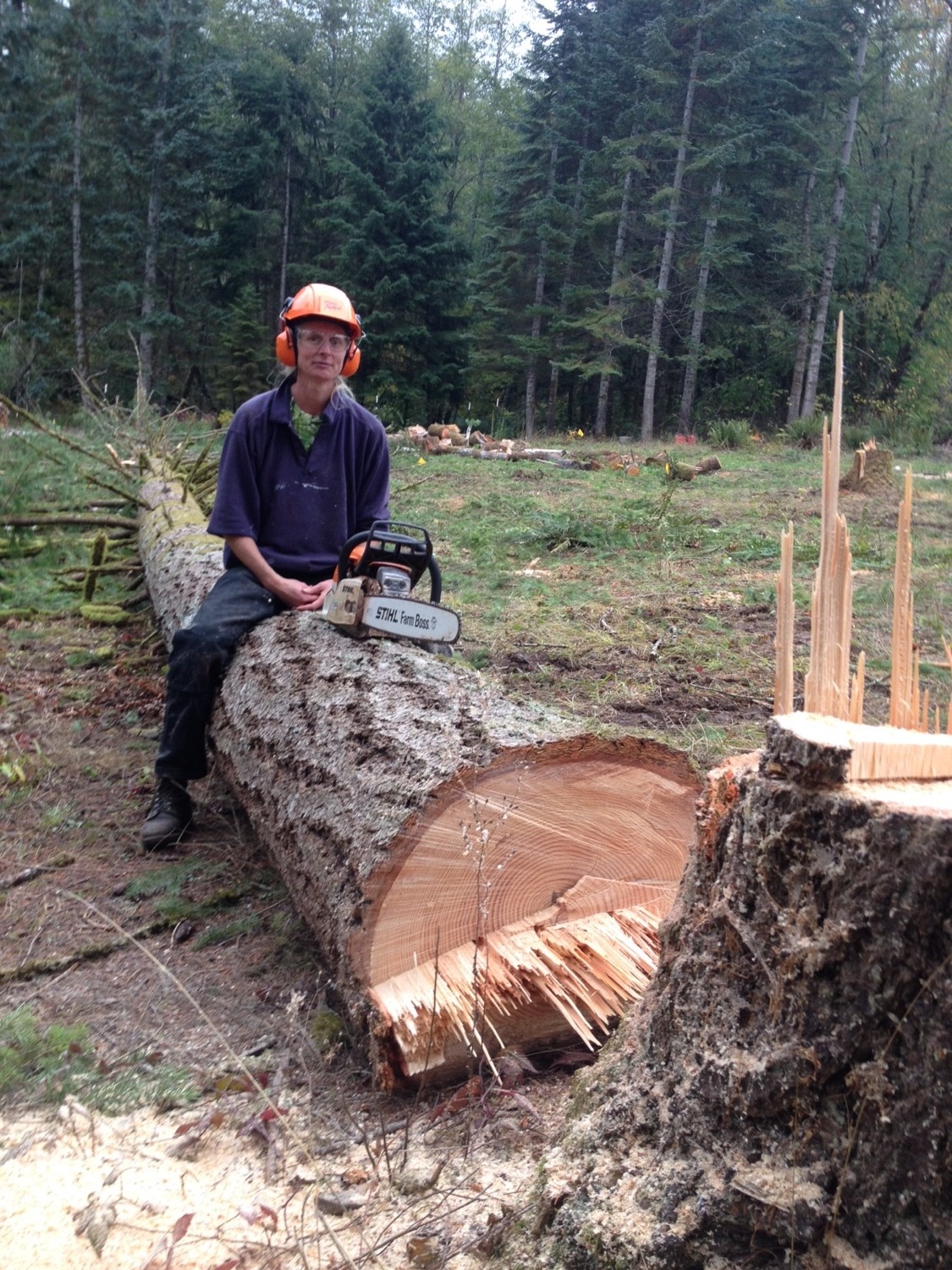
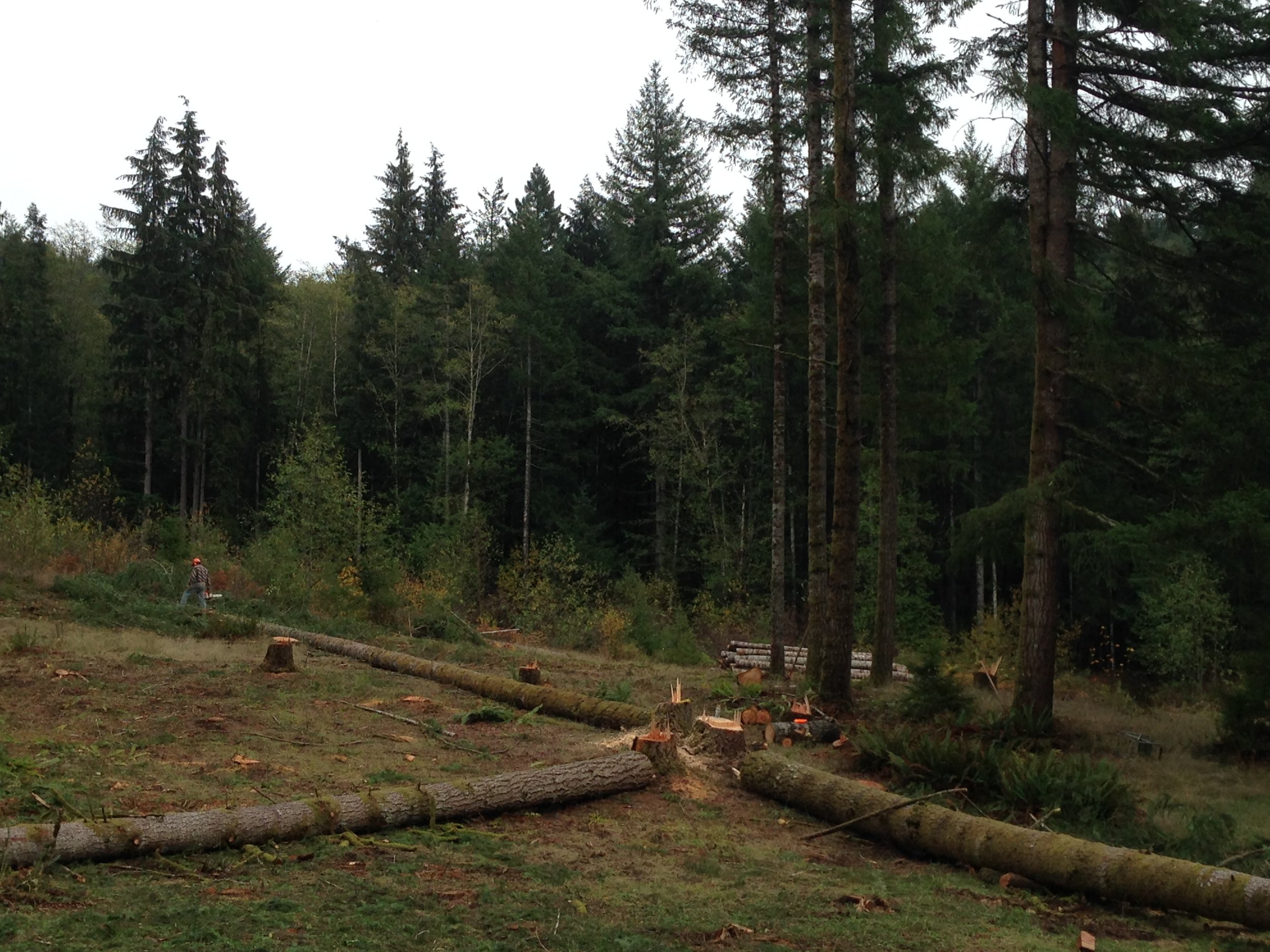
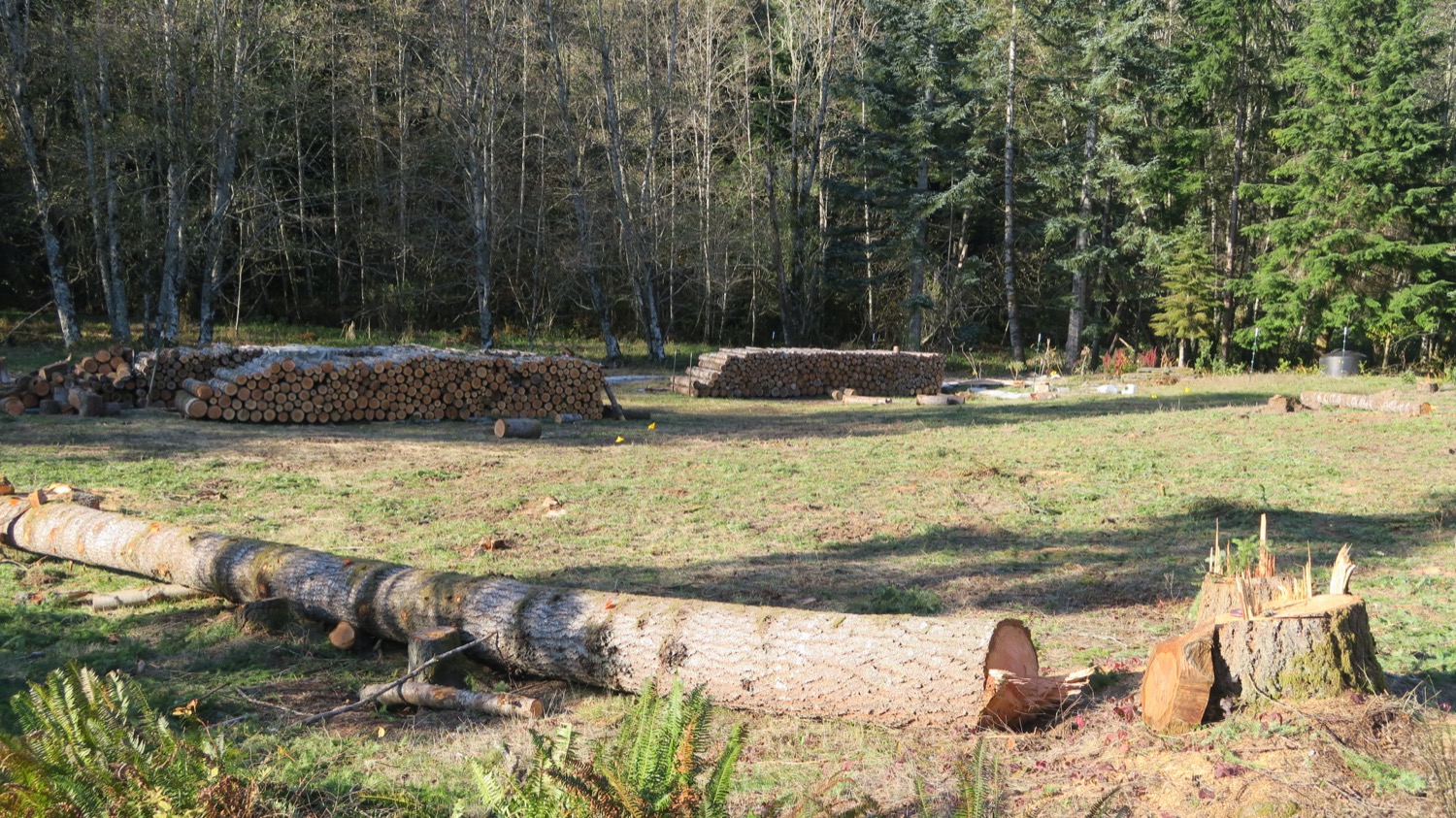
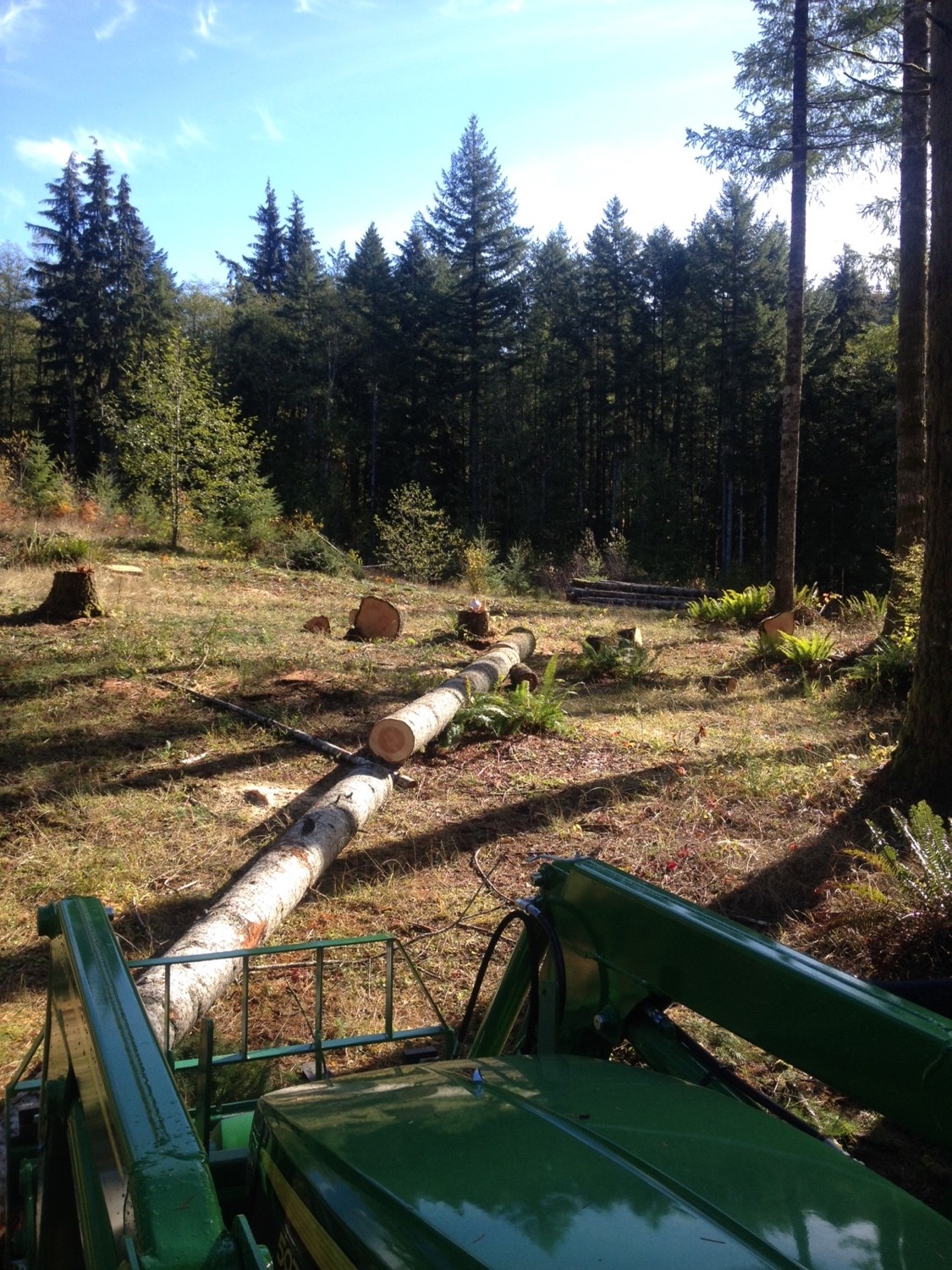
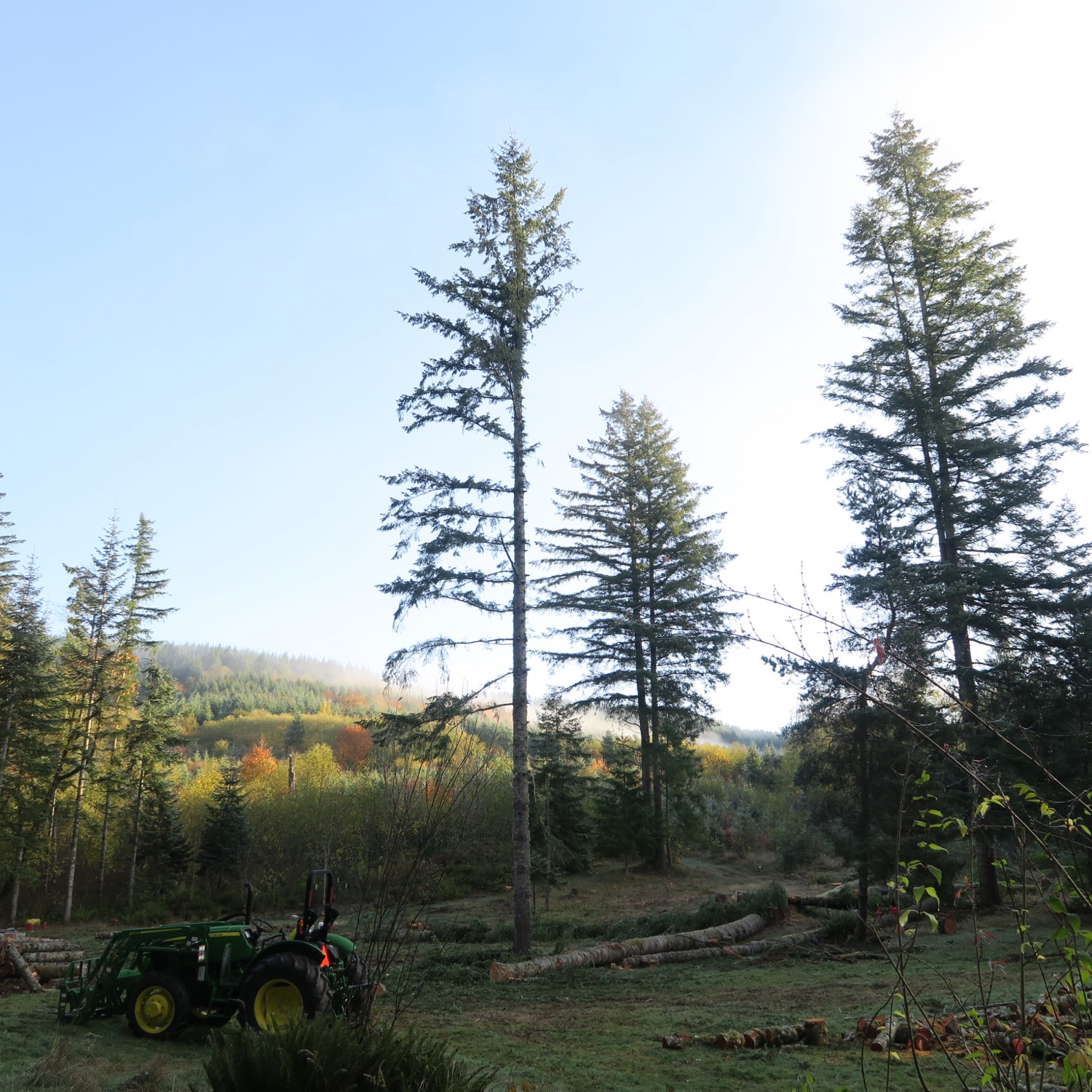
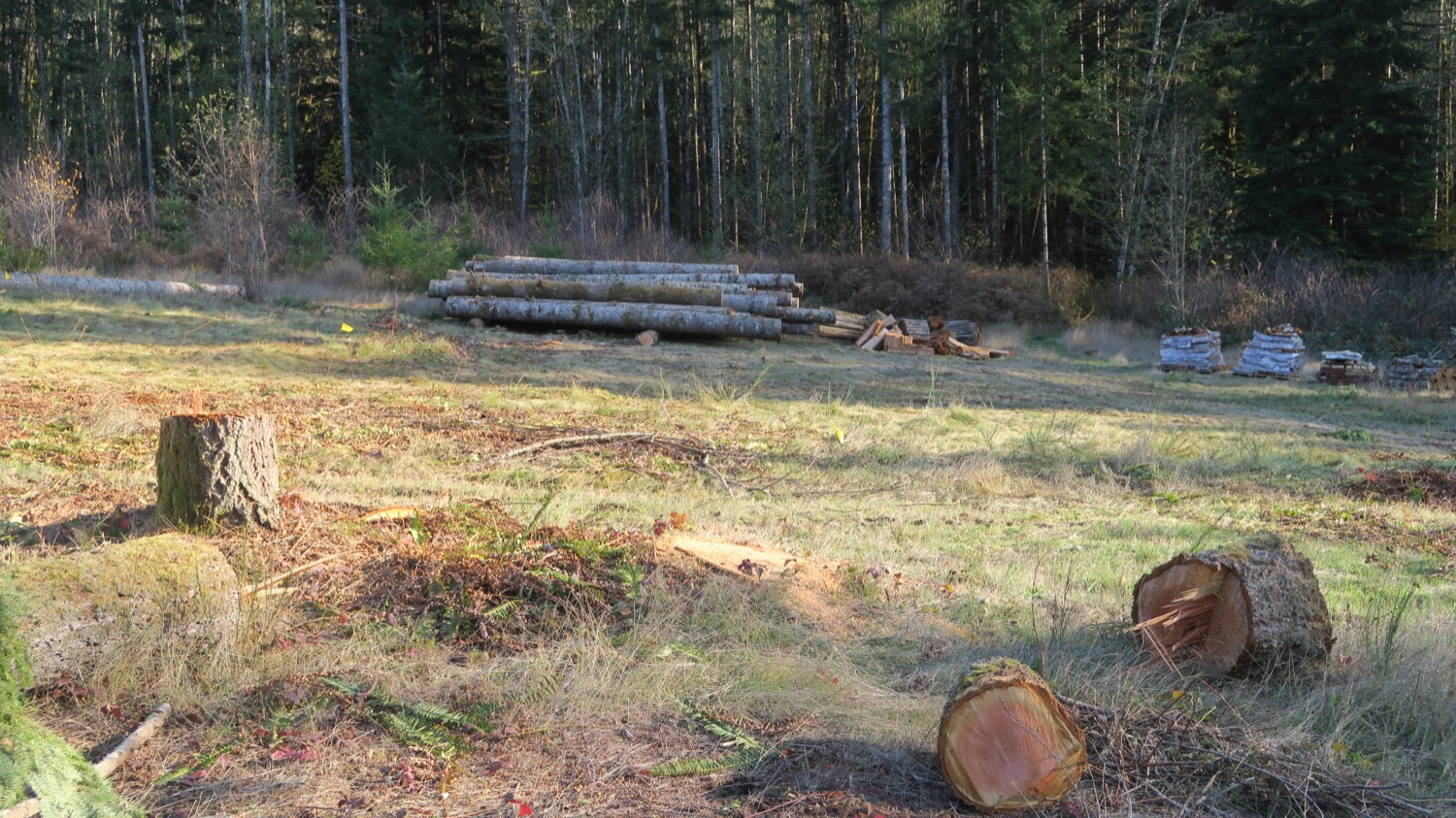
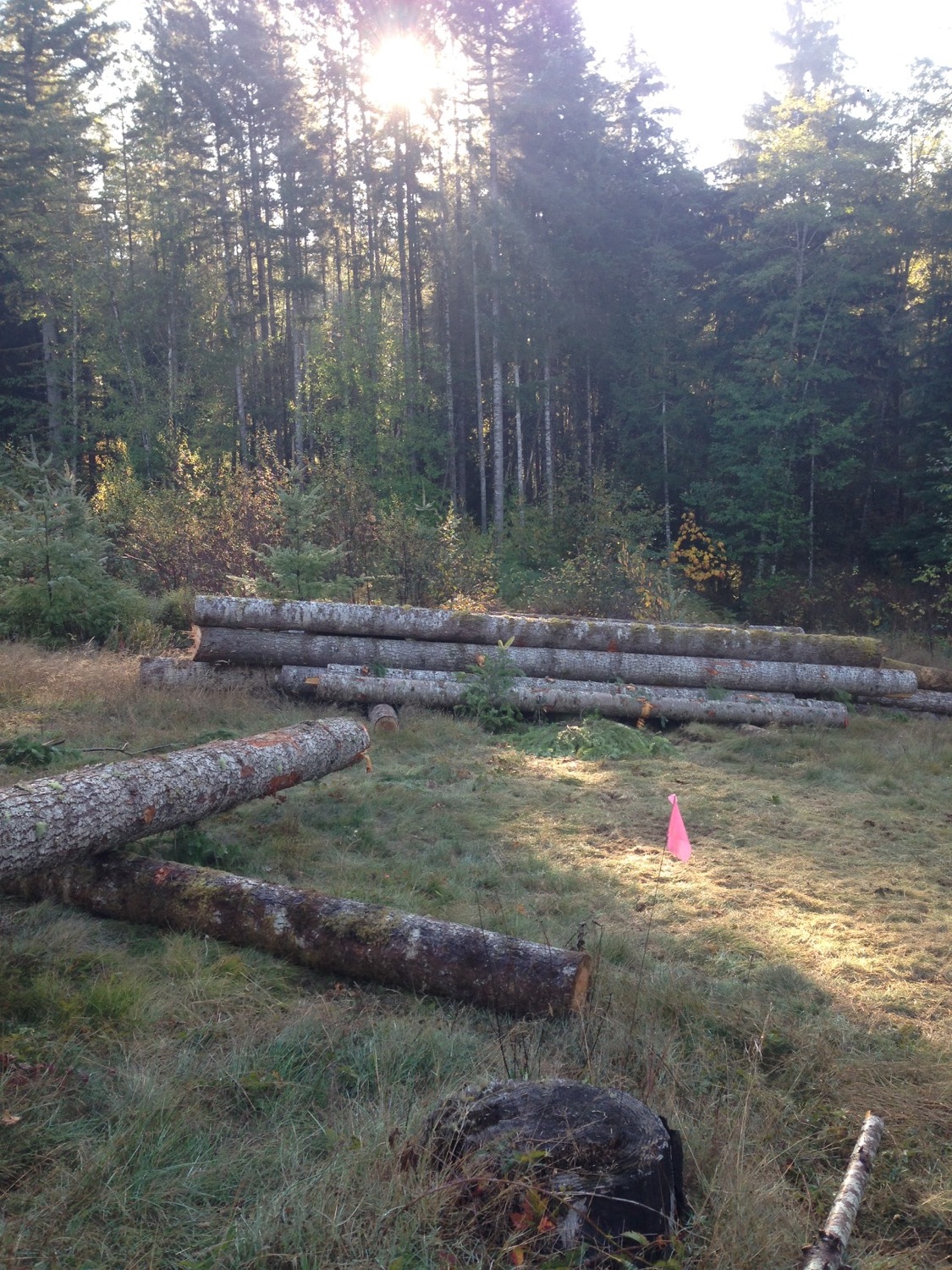


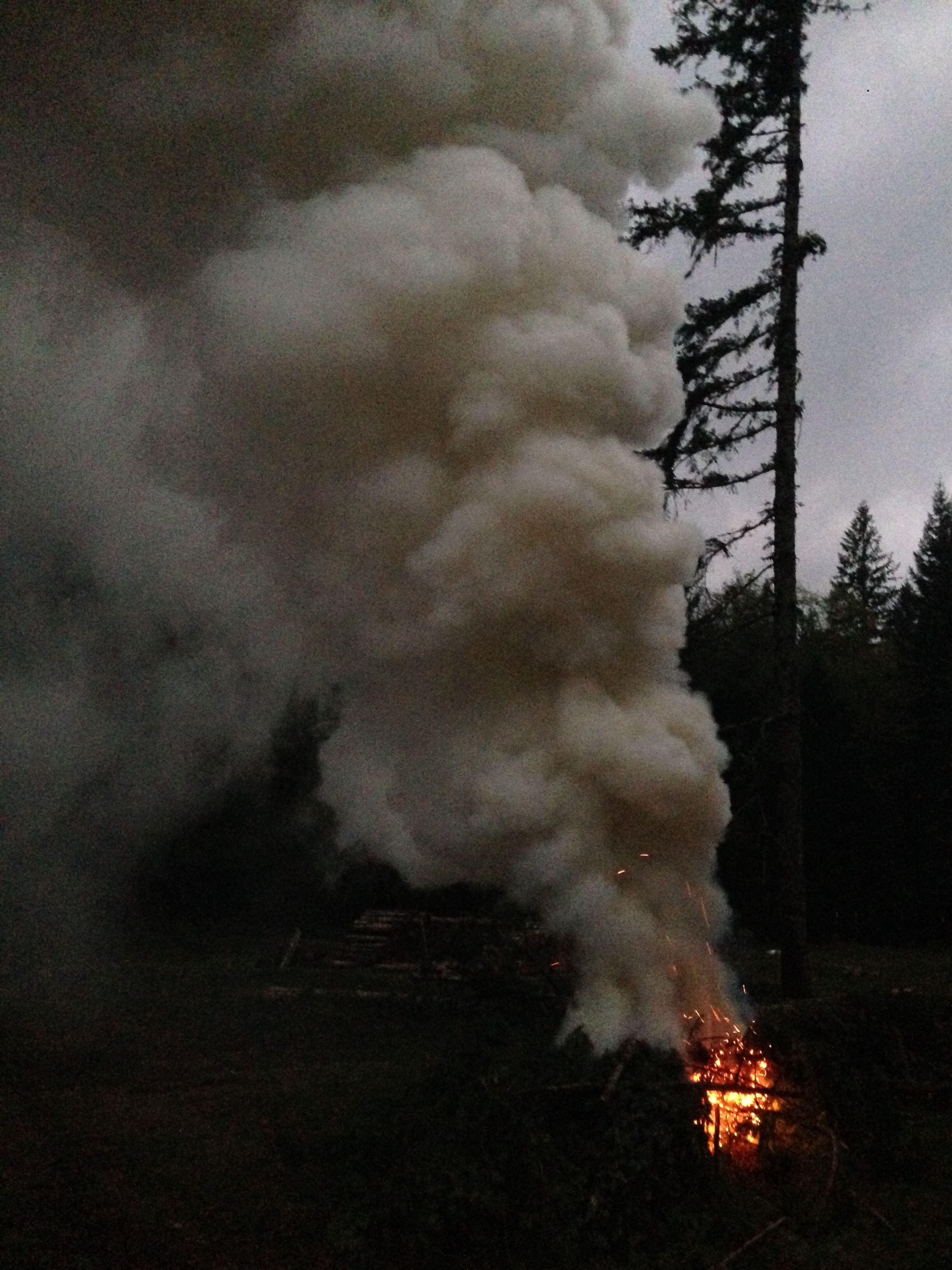
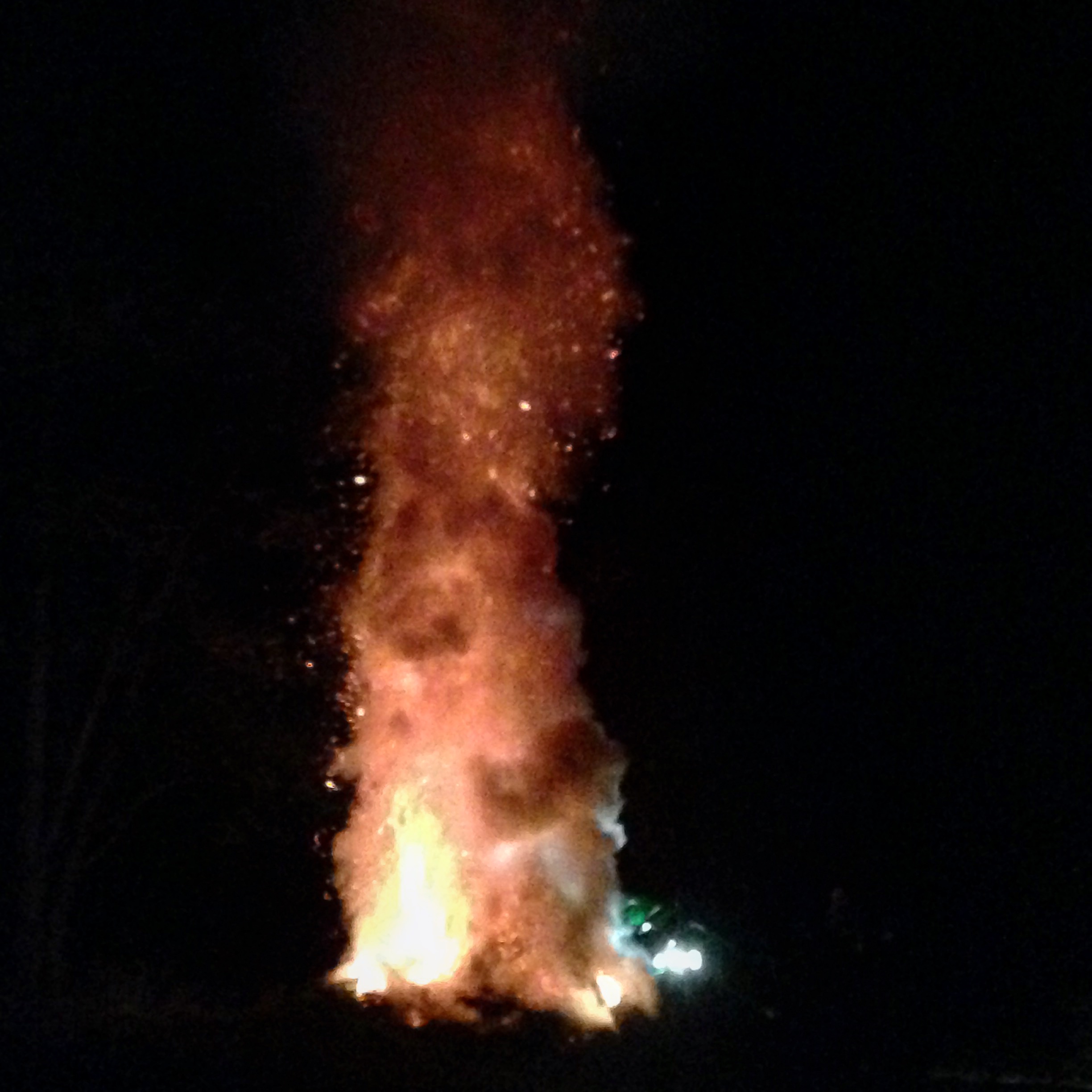
Timbers of potentially useful girth and straightness were kept at 20’ long, which is the max length for a portable mill. Again with the forklifts, we gently lifted these beasts into a pile as distant to other work as possible… Stumps were the next question. I was hoping for minimal soil disturbance in this area in which I was going to be planting my orchard. So stump grinding was 1-expensive 2-of unknown need. The real question was: can I hand-till the small area a new tree needs, navigating the roots of 100 densely-spaced tree roots? With my trusty broad-fork, I tried, and found success. My hopeful map of new trees could be overlaid the grid of stumps with only the smallest of adjustment.
After also considering rotting them out with Turkey-tail mushrooms, we made the decision to simply cut stumps at ground level. This is much more easily said than done: dirt will dull a saw blade faster than anything, so Joel developed a tendon-damaging method of 1-hack-pulling sod and soil away from the stump down below soil level and 2-employing his ninja axe skills to remove the bark (also full of dirt) and then 3-taking out the de-barked stump in pieces with the saw. I picked up the pieces, and tossed them in the fire. Most of the big pieces I piled into the tractor bucket and tipped them into a big funny dip in the land near the orchard, to slowly rot and provide habitat for all kinds of pollinators, on the advice of an excellent book by the Xeres Society.
I must put in a note about body method: when the primary machine a work here is a man, with human wear and tear as opposed to replaceable parts, care of the body is so important. Joel works like a maniac, but he does also care for himself, spacing tasks and mixing them up as to avoid too much repeated stress. It keeps him functional, but it also keeps his mind engaged. I do this as well, in my working life. I think it is the most essential key to doing as much physical labor as we do.
